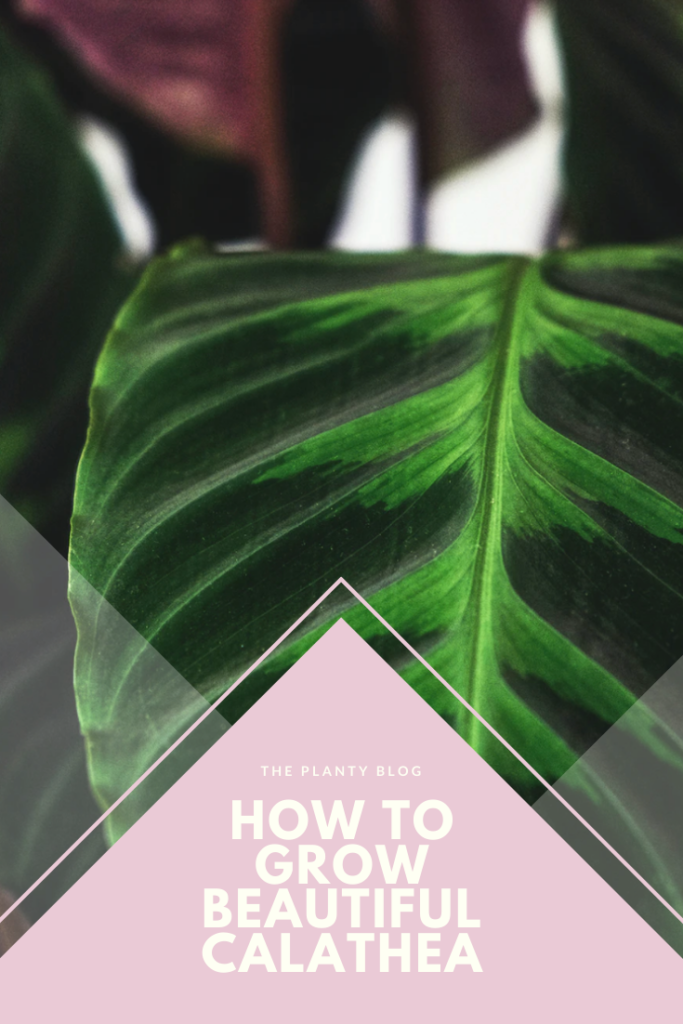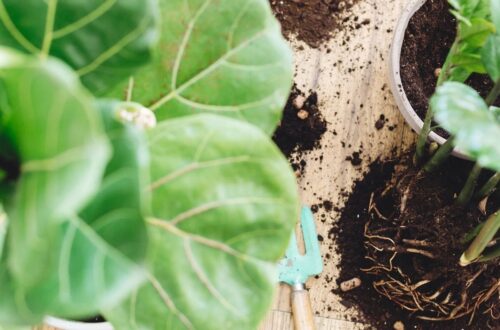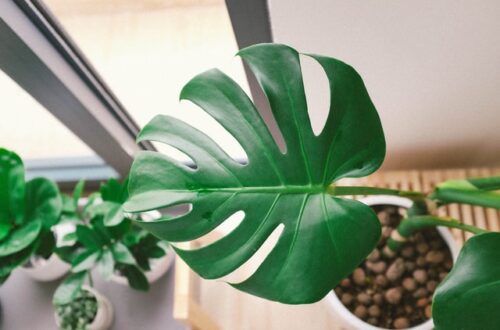Calathea 101: How to Care for Calathea
They’re beautiful, they’re striking, they’re…an enormous pain!
Not only are calathea some of the most breathtaking houseplants on the market, they are the most notoriously difficult planty divas around. I once was like many prospective plant owners who may have scooped up one of these plants from a greenhouse and swiftly killed it. I was mesmerized by their ornate foliage and I was determined to do whatever I could to keep them alive and crisp-free.
As with most houseplants, this involved plenty of research and some trial and error. This guide shares some of my experience with Calathea care, and will give you a sense of how to grow happy calathea in your home!
Calathea 101
Calathea are native to tropical south and central America, with many varieties naturally growing in Brazil. They are members of the Marantaceae family (similar to prayer plants/marantas, ctenanthe and stromanthe). Calatheas can be found growing along the tropical floor primarily shaded by the tall foliage above. They are still getting filtered light living in this environment.
Calatheas are known for their striking foliage patterns. The dark purple undersides of the leaves help the plant absorb the lower amounts of light that it naturally receives.
The external jungle foliage also creates a warm, protective dome trapping in plenty of jungle humidity.
I’ve included this information because understanding the conditions where these tropical plants thrive naturally is the key to growing them successfully in your own home.
Calathea Care
Light
The first consideration when it comes to Calathea care is light. Calathea don’t naturally live in bright, exposed environments. They live happily along the jungle floor, photosynthesizing the medium to even lower light levels they’re given. As a result, they are very happy in medium light environments, and do moderately well in lower light areas. Keep in mind, no plant is happy in complete darkness. A good option is a North facing windows. They can also live happily pulled back from east, west, and even significantly pulled back from a south facing window as well.
Too much light can:
- dilute their striking foliage patterns
- burn their leaves
- or cause them to curl into tiny “leaf tacos” hoping to protect themselves and hold in as much moisture as possible.
Humidity
Understanding calathea care means understanding their humidity needs. They love warm, humid environments and this will keep that lush, delicate foliage from drying out and becoming crispy. In my experience, they are happiest at minimum 50 percent humidity, but ideally they’d like 55-60 percent. If you’re unsure of the humidity levels of a particular space, you can purchase a thermometer/temperature gauge that also measures humidity to get an exact reading.
There are many ways to increase the humidity in your home, but the most efficient way to boost humidity in my experience has been to purchase a humidifier.
More budget-friendly options include:
- pebble trays
- decorative dishes filled with water
- grouping humidity loving plants together
- greenhouses
- regular misting
- if the light permits, keeping your calathea in a bathroom.
Water
Water is crucial to understanding Calathea care. Unlike the more succulent-type houseplant varieties, calathea are much less forgiving of a late watering. Their thin, delicate foliage is not designed to store water like many hoya, jade, or even peperomia varieties. As a result, many leaves will droop, crisp, or yellow quickly if they are thirsty for too long.
A lifesaving tool that I cannot recommend enough is a moisture meter. You stick the meter deep into the soil and if the level is leaning toward the dry side, you are safe to water your plant.
Calathea do not enjoy to be stuck in soaking wet soil, so if the meter is reading moist or wet, then you are in the clear to wait another day or two.
The type of water you use is also important. You might be doing everything right but still have browning tips, and that could be for a couple of reasons. Calathea are sensitive to chemicals and minerals that are often found in regular tap water. This will depend on where you live and how your water is treated. You might be better off watering with distilled water, filtered water, or even rain water if you’re able to collect it.
Another important note about watering (and all houseplants for that matter) would be to only use room temperature water. Never water with cold water, as it will quickly send the plant into shock.
Soil and Pots
According to rare plant YouTuber Kaylee Ellen, it’s very helpful to actually leave your calathea in its nursery pot for a little while after bringing it home. If your plant is not root bound, is pest free and living in relatively good soil already, then you can place that nursery pot in a nice cache pot. This will save it from any stress from repotting immediately after introducing it to a new environment. This advice helped me immensely, so if you’re able to wait that is my recommendation.
Depending on your watering habits, terra cotta might not be the best choice for a calathea as it will draw the moisture out of the soil, which will require you to water your calathea more frequently. Ceramic or even plastic pots tends to keep them much happier. I recycle many of my nursery pots and reuse them as needed. Regardless of the type of pot you choose, good drainage is key to preventing root rot, as always.
For soil, you want to stick with a well-draining soil mix with perlite or pumice, or even a little bit of orchid bark mixed in to allow the roots to breathe. I use a much less chunky mix than my hoya and succulent varieties, but drainage is always important.
Fertilizing
As we now know, calathea are sensitive and react to strong chemicals, including fertilizer. As a general rule, I tend to dilute my liquid fertilizer even more than my other houseplants. Typically, if I buy a calathea from any of my typical trusted garden centres during the growing season, I don’t actually begin fertilizing until the following growing season, out of an abundance of caution.
If I bring home a calathea and notice that the soil is full of tiny beads (slow release fertilizer), I will actually pick out many of them. If I am not changing the soil or repotting the plant, I have seen these slow release fertilizer beads cause the foliage to burn.
In Conclusion
In the end, whether a calathea is right for your home depends on your natural plant parenting style. It also depends on how committed you are to the beauty of having one of these plants thriving in your home.
Ultimately, it can also be a bit of trial and error.
Be patient with yourself and the process. I can promise you that these plants can be incredibly rewarding and a joy to have in your home. Calathea have remained my favourite variety and maybe, just maybe, they can become yours as well!

Additional Resources on Calathea:
- Calathea Alternatives for Those Who Love Calathea but Don’t Love Drama
- Why are the Tips of My Calathea Turning Brown?
- Top 5 Easiest Calathea to Grow



2 Comments
Pingback:
Pingback: